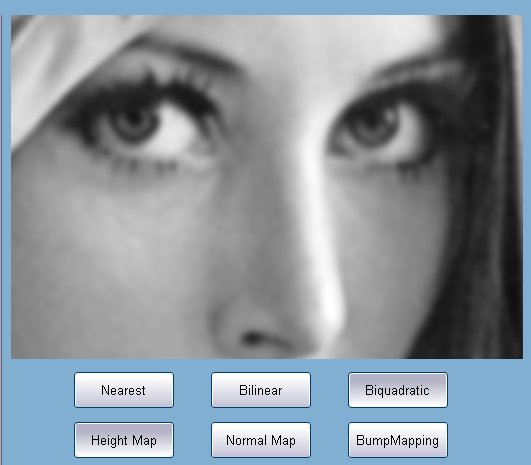In general, interpolation is a method used to construct a range of values from a set of data points. In digital image computing there are several methods of interpolation to improve the aspect of a transformed image but there is a problem: all of them are too slow to work via software in real time. Infact, we can see fast interpolations in 3d games only because they are performed via hardware by the graphic card (infact in the past it was very difficult to see an interpolation performed in real time). However, interpolation is usefull not only for 3d engines but they are an important part of digital image computing so there is a real need to develop a method to make it faster, expecially if you have to work with a large amount of images at the same time. For this reason I have programmed from scratch a set of optimized algorithms of interpolation that are definite as in the past... but 100 times faster! The only limitation is that they can be used only for scale trasform but numerically they are perfect and faster at the same time.

Moreover, they are useful to generate procedural images in real time, like textures, that can be used in 3d engine or in some paint softwares where you cannot have a 3d card to speed up all the stuff. In this demo you can see the high performaces of different algorithms with images of 16 bit per pixel. To make sure that my interpolation is numerically perfect, I have included also the calculus of the normal map and the bump mapping effect. With biquadratic interpolation you will obtain a still perfect scaled bump map because the normal map calculus is derivative and the biquadratic is a second order reconstruction filter.
There are the performances on my computer:
Zoom 1x (on a 512x512 image)
- Nearest: 400 fps - Bilinear: 270 fps - Biquadratic: 80 fps
Zoom 4x (on a 512x512 image)
- Nearest: 965 fps - Bilinear: 780 fps - Biquadratic: 245 fps
Zoom 16x (on a 512x512 image)
- Nearest: 1405 fps - Bilinear: 1165 fps - Biquadratic: 390 fps
As you can see, the speed of the algorithm is directly proportional to the size of the zoom, however it is very fast also at the minimum size of 1x. This condition is very useful if you have to resize images or to generate textures with a large amount of stretched layers, like perlin noise. CPU: Intel 2 QuadCore 2333 Mhz; RAM: 4 GB DDRII 800Mhz
Gianpaolo Ingegneri
Copyright @ 2010 – All right reserved